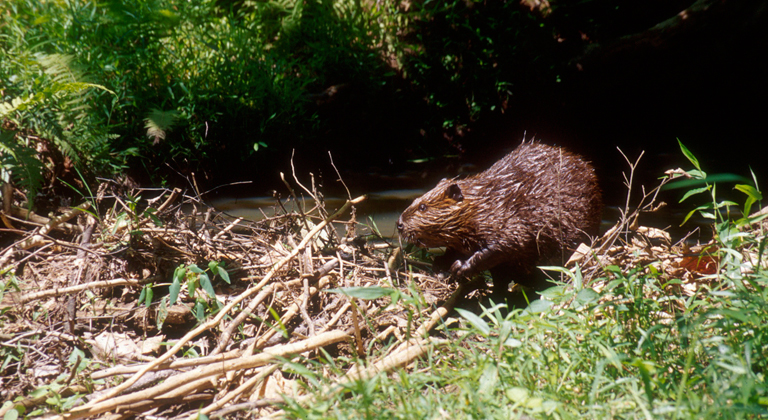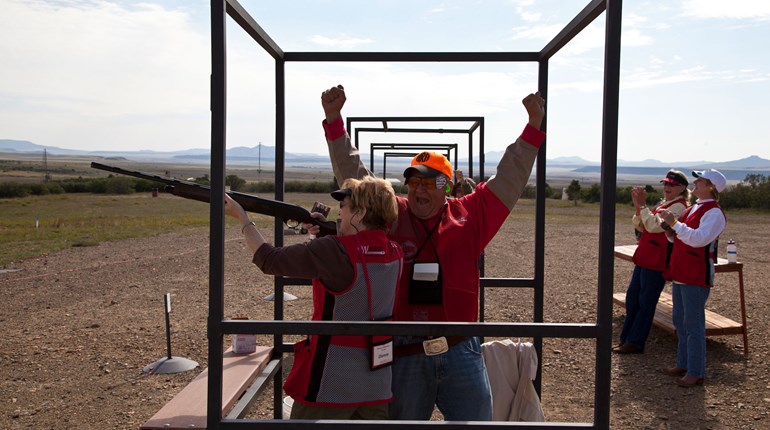
Once upon a time, longer ago than either of us would care to admit, my father was a colonel in the U.S. Army. His battalion was heading into the vast wilderness that was part of a very large military installation to stage an exercise. The first sortie had failed to report back on schedule, so eventually Dad asked for the radio to get an update. Finally, the squad leader radioed back. "Objective failed at this time, sir," reported the squad commander.
Dad was flummoxed. "And why is that?" he queried.
"Beavers, sir," came the laconic reply. "The beavers have assumed complete control of the area."
Yes, a family of beavers had dammed a local stream, completely flooding the entire area where a battalion's worth of soldiers had meant to camp—and they had done so in the 48 hours since the area had been chosen. The entire might of the United States military, backed by the latest and greatest in high-speed, low-drag all-terrain vehicles and weaponry, utterly foiled...by a handful of rodents. It's a funny anecdote, but the truth is that beavers really have given, and continue to give, we humans a run for our money. Here are five surprising ways that's true:
1. Beavers are second only to humans in their ability to change their environment to suit them.
You've heard the phrase "busy as a beaver," and there's a good reason why it exists: Beavers are indefatigable architects capable of rearranging an ecosystem virtually overnight. Actually, forget the "virtually" part—a beaver dam can be constructed in less than 24 hours. In general, the beavers don't live in the actual dams. Instead, they dam a river or stream only in order to create a pond. They'll then build a lodge in the pond, to live in, which is only accessible underwater. Once ensconced in their lodges, the beavers are pretty much as safe from their natural predators as people are in our houses: Although it's possible for an animal as big and determined as a bear to smash a beaver lodge, most predators will choose to wait until the beavers are out and about.
2. Beavers are their own SCUBA suits.
Bathyspheres? SCUBA suits? The beavers beat us to underwater exploration by about 100,000 years. Not only do they possess nictitating membranes—transparent eyelids that they use like goggles underwater—beavers are sporting a full underwater-exploration kit under that fur. They have valves in their noses, ears and the backs of their throats that prevent water from seeping in. Their webbed feet help them move up to 5 miles an hour underwater, and they can stay there without coming up for air for 15 minutes.
3. Beaver habitations improve wild ecosystems.
Beaver-created ponds, unlike many human "improvements" to an area, are generally considered positive additions to the ecosystem. Beavers fell large, mature trees for use in their dams. The young trees that replace them offer accessible forage for other animals like deer. The trees that drown in the newly created beaver ponds attract insects, which in turn attracts birds. What's more, the wetlands that beavers create serve to filter sediments and pollutants from rivers and streams. This is why beavers are considered "keystone species" for their native ecosystems.
4. Unless, of course, it's not their native ecosystem. Then they're taking over.
Note the use of the word "native" in the last sentence of the above paragraph. There's a reason for that: As an invasive species, the humble beaver is just short of catastrophic. Just ask the residents of the South American island Tierra del Fuego. Back in the 1940s, 10 breeding pairs of beavers (which had been imported as part of a failed fur-harvesting operation) were released into the wild. There were no natural predators present, but plenty of streams and lots of hardwoods...so the beavers thrived. There are now estimated to be more than 100,000 of them on the 18,000-square-mile island. The beavers' unchecked population growth has caused decimation of the native forests. Compounding the problem is that wetlands don't serve the same purpose in Tierra del Fuego as they do in North America. According to ecologist Christopher Anderson, "The change in the forested portion of this biome is the largest landscape-level alteration in the Holocene—that is, approximately 10,000 years." There's currently an eradication project in process...and Nature magazine has stated that it's the largest one ever attempted.
5. Beavers helped shape the course of American history.
When the first European traders and colonists appeared in North America, one of the primary resources they sought was fur...and, specifically, beaver fur. Beaver pelts were wildly popular for use in clothing and hats in Europe and had been for centuries; mention of a beaver-fur hat appears in Chaucer's Canterbury Tales. Unfortunately, the Eurasian beaver population had been severely depleted by the seventeenth century, so North American beaver pelts became extremely valuable. Most of the early exploration of North Americas was conducted by trappers and traders in search of fur. In fact, beaver skins essentially became a unit of currency as standardized by the Hudson's Bay Company. One high-quality beaver pelt was known as a "Made Beaver," and by the late eighteenth century, 10 Made Beavers would buy you a gun. Uncontrolled hunting and trapping came very close to doing to the North American beaver what had been done to the Eurasian beaver, but twentieth-century conservation techniques and reintroduction have brought their population back to healthy levels. Today, beaver trapping remains a lucrative pastime for many Americans.
It's probably for the best that beavers lack large cerebellums and opposable thumbs. Otherwise, they might someday really give us a run for our money.







































